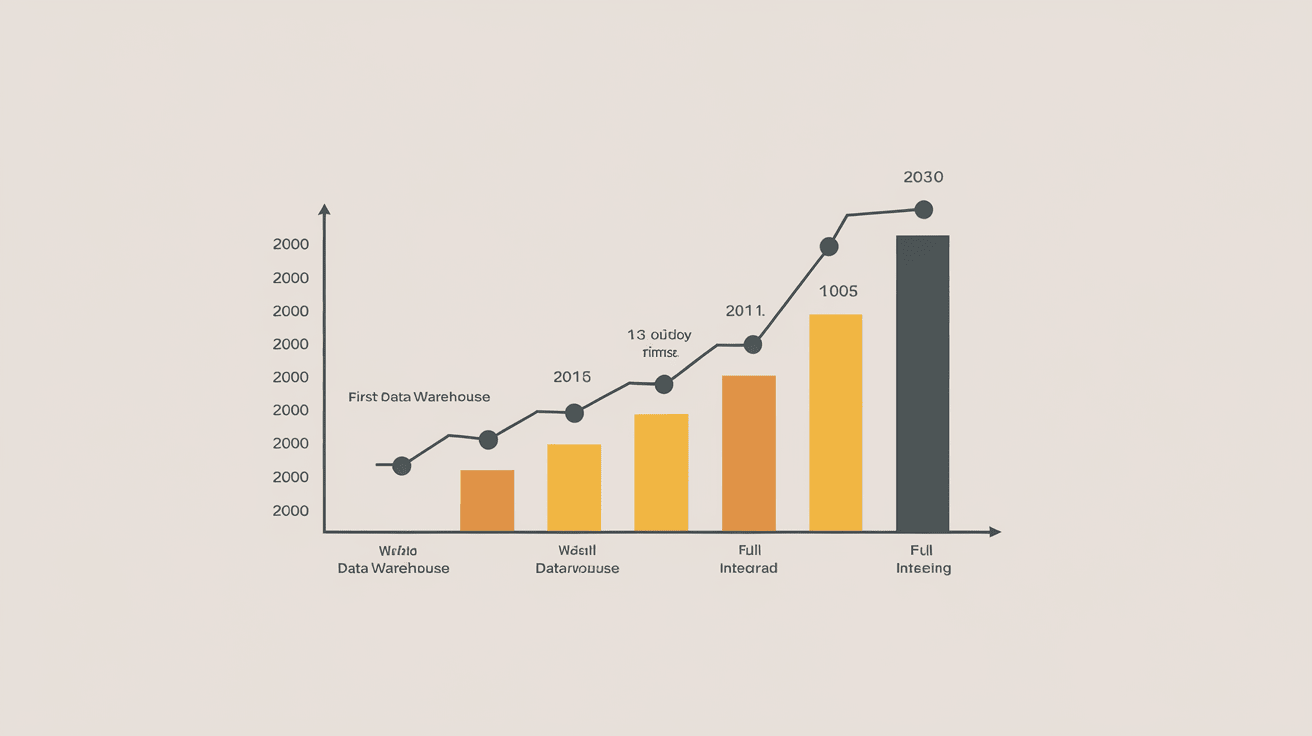Building Scalable Data Architectures for Global Banks

Introduction
The rapid growth of digital banking, financial technology (FinTech), and data-driven decision-making has created a pressing need for scalable data architectures in global banks. With increasing transaction volumes, real-time analytics, regulatory requirements, and the integration of artificial intelligence (AI) and machine learning (ML), banks require robust, flexible, and future-proof data infrastructures to stay competitive.
Scalable data architectures allow financial institutions to efficiently process, store, and analyze vast amounts of structured and unstructured data. They enable real-time fraud detection, enhanced risk management, seamless customer experiences, and regulatory compliance. This article provides guidelines for designing scalable data architectures that support global banking operations, cloud computing, and AI-driven analytics.
Understanding Scalable Data Architectures in Banking
1. What is a Scalable Data Architecture?
A scalable data architecture is a flexible, high-performance infrastructure that allows banks to efficiently process large datasets across multiple channels. It supports:
- High data throughput for millions of transactions.
- Scalability across cloud, on-premise, and hybrid environments.
- Seamless integration with AI, machine learning, and big data platforms.
- Secure and compliant data management for global banking regulations.
2. Why is Scalable Data Architecture Essential for Banks?
Banks require scalable data solutions to:
- Handle massive transactional data while maintaining system performance.
- Ensure regulatory compliance with evolving global laws.
- Enable AI-driven analytics for fraud detection, risk assessment, and customer personalization.
- Improve disaster recovery and resilience in case of cybersecurity threats or system failures.
Key Components of a Scalable Data Architecture for Banks
1. Cloud-Based Data Storage and Processing
- Hybrid Cloud Solutions: AWS, Google Cloud, and Microsoft Azure allow scalable and cost-effective data management.
- Data Lakes and Warehouses: Solutions like Snowflake, Google BigQuery, and AWS Redshift facilitate big data storage and analytics.
- Edge Computing for Real-Time Processing: Improves latency-sensitive applications such as fraud detection and credit scoring.
2. Data Governance and Security
- Zero-Trust Security Framework: Restricts access based on identity verification and AI-driven monitoring.
- Compliance-Ready Data Management: Adheres to GDPR, Basel III, CCPA, and ISO 27001.
- Blockchain for Data Integrity: Enhances security and transparency in financial transactions.
3. AI-Driven Automation and Data Pipelines
- Automated ETL (Extract, Transform, Load) Pipelines: Using Apache Airflow, Talend, or Fivetran to manage large-scale data movement.
- AI-Powered Predictive Analytics: Helps in fraud detection, credit risk assessment, and personalized banking.
- Federated Learning for Privacy-Preserving AI: Reduces risks by keeping sensitive data decentralized.
4. API-Driven Microservices Architecture
- Microservices allow modular banking services that scale independently.
- Open Banking APIs enable seamless third-party integrations, such as FinTech collaborations.
- Event-Driven Architecture with Kafka and RabbitMQ: Supports real-time data streaming and decision-making.
Real-World Applications of Scalable Data Architectures in Banking
Case Study 1: JPMorgan Chase – AI-Driven Risk Management
JPMorgan Chase utilizes cloud-based AI-driven data architectures to manage real-time fraud detection, risk assessment, and trade analysis.
Case Study 2: Citibank – API-Based Open Banking System
Citibank has implemented a scalable microservices-based architecture to provide open banking solutions, enabling seamless FinTech integrations.
Case Study 3: HSBC – Multi-Cloud Data Warehousing for Compliance
HSBC has adopted Snowflake and Google BigQuery for a multi-cloud data strategy to meet evolving regulatory and compliance requirements.
Challenges in Building Scalable Data Architectures for Banks
1. Legacy System Migration
- Many banks still operate on legacy infrastructure, making cloud adoption complex.
- Solution: Implement hybrid cloud architectures with phased migration strategies.
2. Data Security and Privacy
- Sensitive banking data is a target for cyber threats.
- Solution: Enforce data encryption, tokenization, and AI-powered anomaly detection.
3. Regulatory Compliance Complexity
- Banks must comply with global laws like GDPR, CCPA, and Basel III.
- Solution: Deploy automated compliance monitoring and RegTech solutions.
4. Cost and Scalability Management
- Scaling data infrastructure can be expensive.
- Solution: Use pay-as-you-go cloud models and serverless computing to optimize costs.
Future Trends in Banking Data Architectures
1. Hybrid Multi-Cloud Strategies
- Banks will leverage multiple cloud providers to enhance resilience and scalability.
2. AI-Powered Data Governance
- AI will automate data classification, metadata tagging, and anomaly detection.
3. Quantum Computing for Financial Modeling
- Quantum computing will revolutionize risk assessment and algorithmic trading.
4. Federated Learning for Secure AI Data Processing
- Enables privacy-first AI analytics without exposing customer data.
Expert Recommendations for Banks
- Adopt Cloud-Native and Serverless Data Architectures – Leverage Google BigQuery, AWS Lambda, or Azure Synapse for cost-efficient scaling.
- Integrate AI-Powered Risk Analytics – Deploy AI models to detect fraud, manage credit risk, and personalize banking experiences.
- Implement Zero-Trust Security and Encryption – Use AI-driven anomaly detection and blockchain for secure transactions.
- Optimize API-Driven Banking with Microservices – Enable real-time data streaming with Apache Kafka and event-driven APIs.
- Enhance Regulatory Compliance Automation – Utilize RegTech platforms to streamline data reporting and compliance monitoring.
Conclusion
Building scalable data architectures is essential for global banks to support AI-driven analytics, regulatory compliance, cybersecurity, and real-time banking services. By embracing cloud-native infrastructures, AI automation, and microservices-based open banking, financial institutions can remain agile in an evolving digital landscape.
With the rise of quantum computing, federated learning, and hybrid cloud solutions, banks that prioritize scalability and security in their data strategies will gain a competitive edge. Investing in scalable, secure, and AI-powered data architectures is no longer optional—it is a necessity for modern financial institutions.
#DataArchitecture #BankingTech #FinTech #CloudBanking #BigData #AIinFinance #DataSecurity #MachineLearning #APIBanking #Blockchain #RiskManagement #DataAnalytics #FinancialTechnology #CyberSecurity #HybridCloud #RegTech #QuantumComputing #RealTimeBanking #OpenBanking #PredictiveAnalytics

Introduction Data warehousing has played a pivotal role in the evolution of banking technology. As banks handle enormous volumes of…

Introduction In the fast-evolving landscape of financial technology (FinTech), regulatory compliance is a cornerstone for maintaining stability, trust, and legal…